In a move that signals a return to its rugged, utilitarian roots, Toyota has pulled the covers off the all-new LandCruiser FJ, a compact, body-on-frame SUV designed to capture the spirit of classic off-roaders like the original FJ40 and the modern cult-hit FJ Cruiser. The prototype, set for a production launch around mid-2026, aims to create a new segment of accessible adventure by combining the LandCruiser’s proven capability with a smaller, more customisable package.
Despite the global debut, Toyota Australia confirmed there are no current plans to launch the FJ locally, citing the absence of diesel or hybrid options as a mismatch with market expectations.
A new chapter in the LandCruiser legacy
Originally born as the Toyota BJ in 1951, the LandCruiser has evolved over seven decades into a global symbol of durability and dependability. With over 12 million units sold across 190 countries, it remains one of Toyota’s most enduring nameplates.
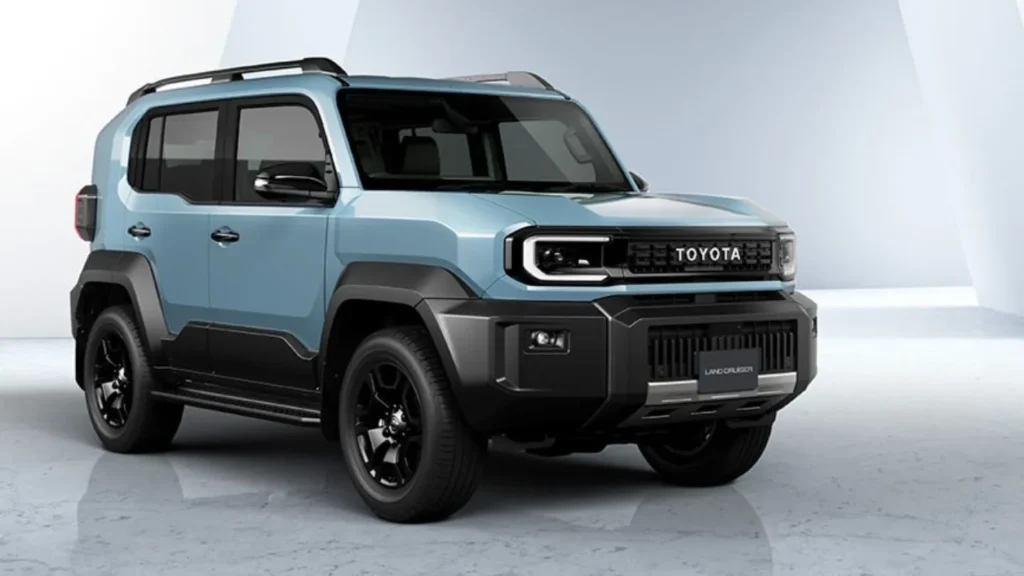
Until now, the LandCruiser family consisted of three models:
- 300 Series – the flagship luxury off-roader.
- 70 Series – the heavy-duty workhorse.
- 250 Series – the practical, back-to-basics model launched in 2024.
The new LandCruiser FJ joins the lineup as the fourth member, focused on “Freedom and Joy”, the pleasure of exploration and individual expression, in a compact, accessible form.
Exterior design features
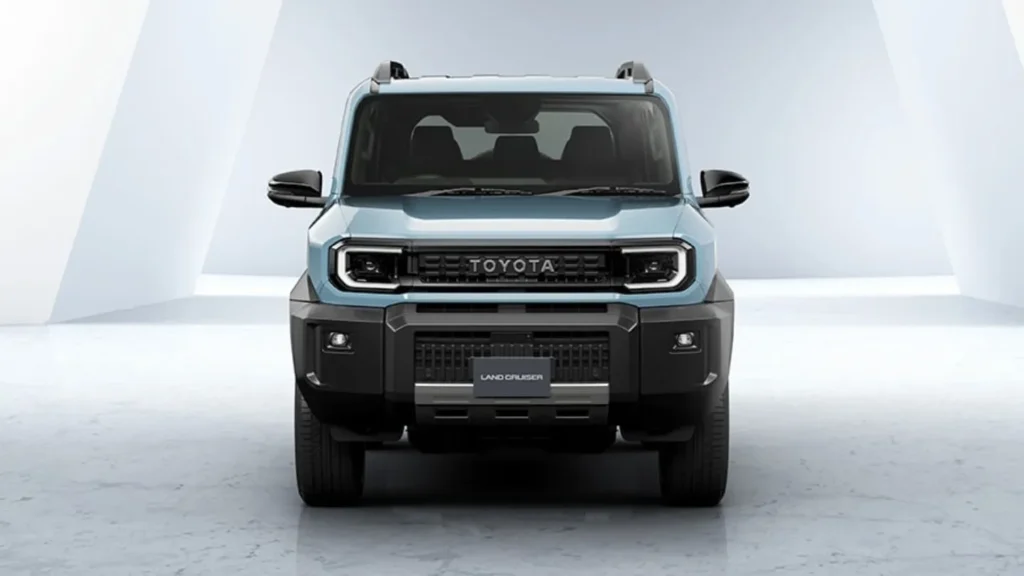
The LandCruiser FJ’s design pays homage to the FJ Cruiser sold between 2011 and 2016, while adopting a boxy, purposeful silhouette that signals its off-road intent.
Exterior highlights
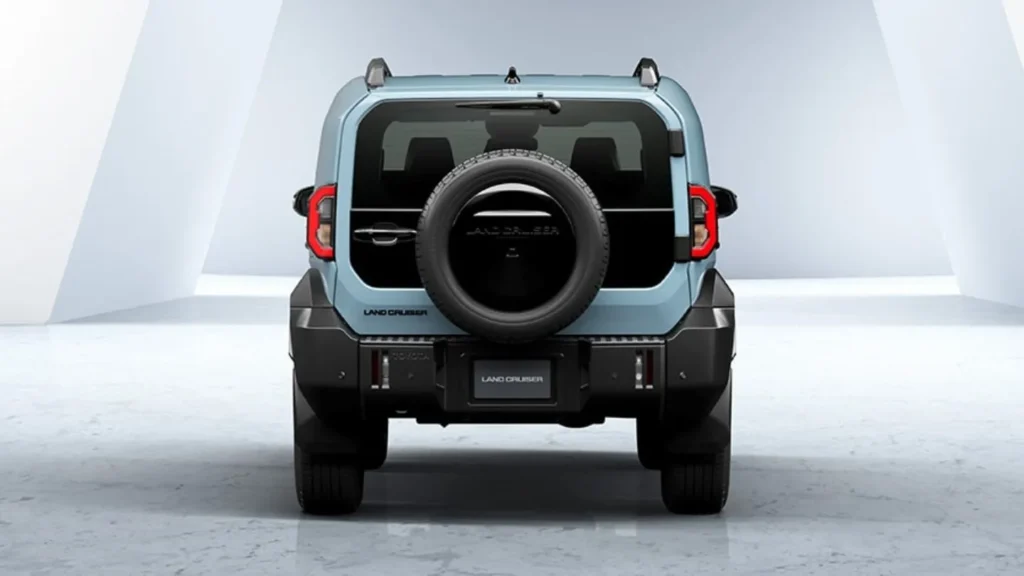
- Square, upright cabin for maximum space and visibility.
- Round LED headlights and flared fenders evoke the classic LandCruiser style.
- Removable, segmented bumpers allow damaged parts to be easily replaced and enable greater customisation.
- Tailgate-mounted spare wheel and side steps reinforce its rugged, functional look.
Toyota describes the styling theme as a mix of “traditional and modern,” combining the LandCruiser’s iconic DNA with playful proportions and practical details.
Interior design features
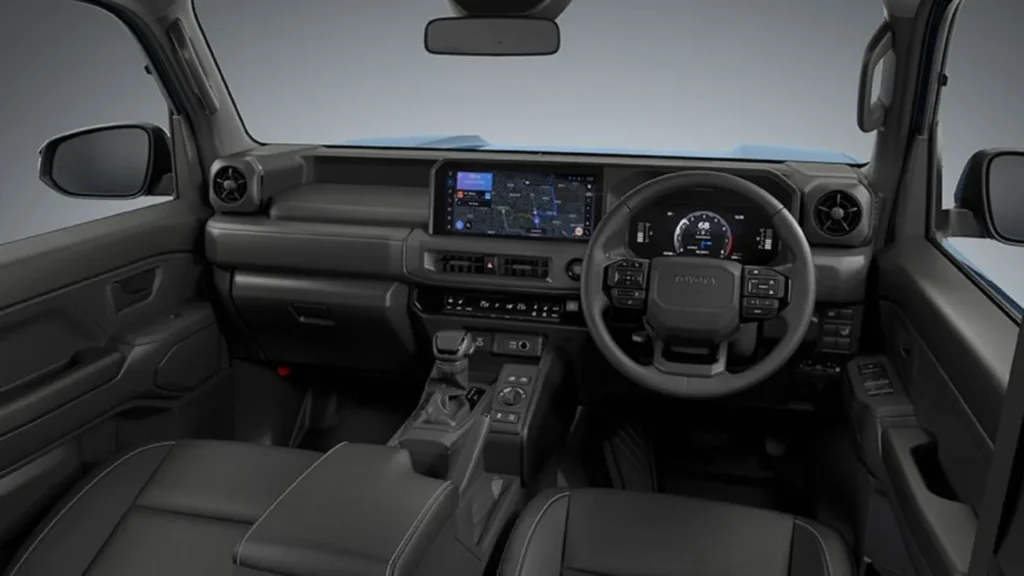
Inside, the Toyota LandCruiser FJ follows a driver-focused layout, similar in design to the LandCruiser Prado. The low-set dashboard improves forward visibility, while large physical switches and a central touchscreen make operation straightforward even on bumpy terrain.
Interior highlights
- Digital instrument cluster and infotainment touchscreen.
- Horizontal dash design for easy reading of vehicle attitude off-road.
- Toyota Safety Sense active safety suite, including Pre-Collision System and adaptive cruise control.
- Five-passenger seating across two rows.
Toyota says the cabin aims to deliver “the joy of mobility,” balancing comfort, visibility, and control.
Confirmed hardware: Platform, powertrain, and performance
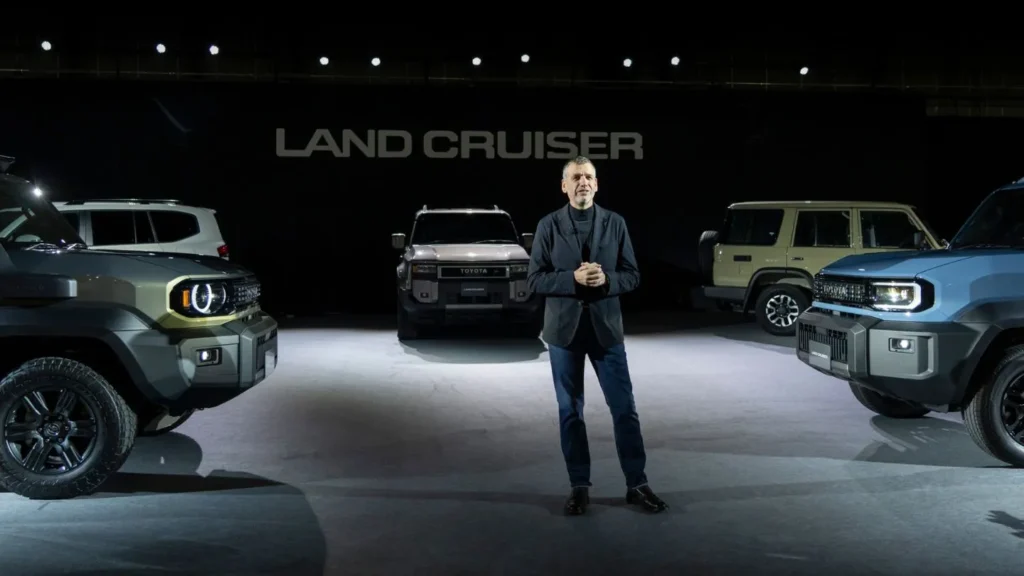
The Toyota LandCruiser FJ is not a unibody crossover; it’s built on serious off-road hardware.
| Specification | Detail |
| Platform | Shortened IMV ladder-frame (related to Toyota Hilux) |
| Length / Width / Height | 4,575 mm / 1,855 mm / 1,960 mm |
| Wheelbase | 2,580 mm (270mm shorter than the 250 Series) |
| Engine | 2TR-FE 2.7-litre 4-cylinder petrol |
| Power / Torque | 120 kW / 246 Nm |
| Driveline | Part-Time 4WD |
| Transmission | 6-Speed Automatic |
| Turning Circle | 11.0 m |
The specifications show the LandCruiser FJ’s most significant weakness. The sole confirmed powertrain is the 2.7-liter 2TR-FE four-cylinder petrol engine, producing 120 kW (163 PS) and 246 Nm of torque, paired with a six-speed automatic and part-time 4WD.
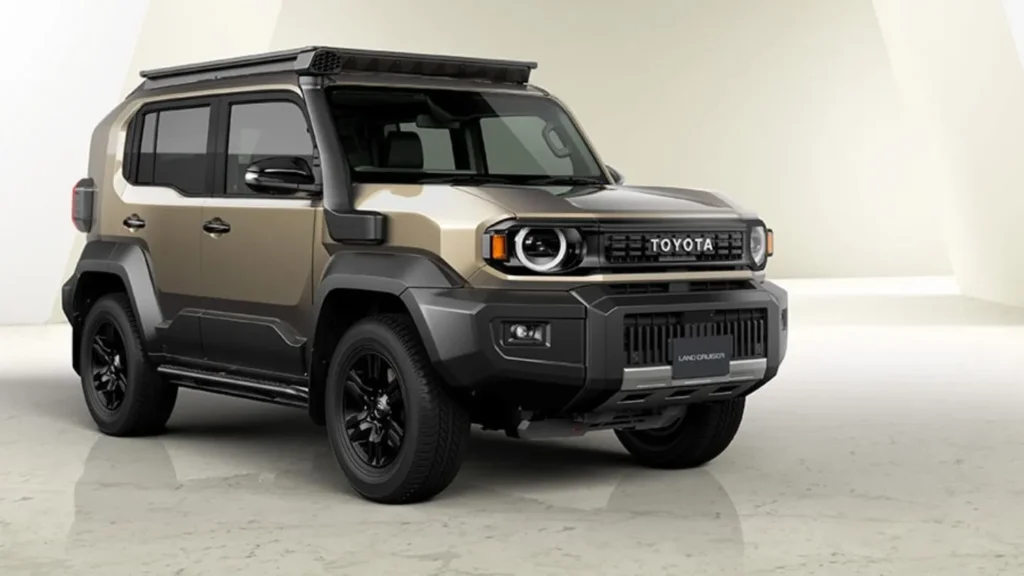
Let’s be clear, this engine is not new. It’s a workhorse known for reliability, not performance or efficiency. In a vehicle of this size and purpose, it will be underpowered and thirsty.
- No Diesel: This excludes it from markets like Australia and Europe where diesel torque is preferred for towing and off-roading.
- No Hybrid/Turbo: In an era when even the Wrangler and Defender offer electrification and forced induction, the FJ’s lack of a modern powertrain feels like a glaring omission.
Customisation and accessories
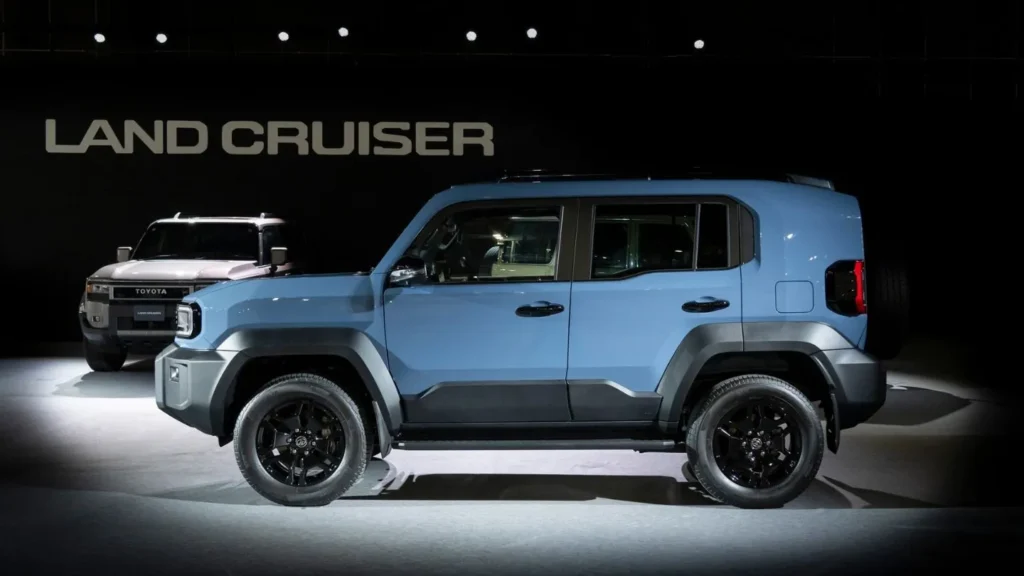
Customisation is central to the LandCruiser FJ’s philosophy. Toyota will offer a range of accessories designed to enhance both appearance and function:
- MOLLE panels for carrying outdoor gear.
- Roof racks, tow hooks, and protective cladding.
- Optional off-road kits and adventure-focused add-ons (availability to vary by region).
Toyota also showcased the Land Hopper, a small electric personal mobility scooter that can be stored in the FJ’s boot, a nod to the company’s expanding view of “mobility.”
Production and market outlook
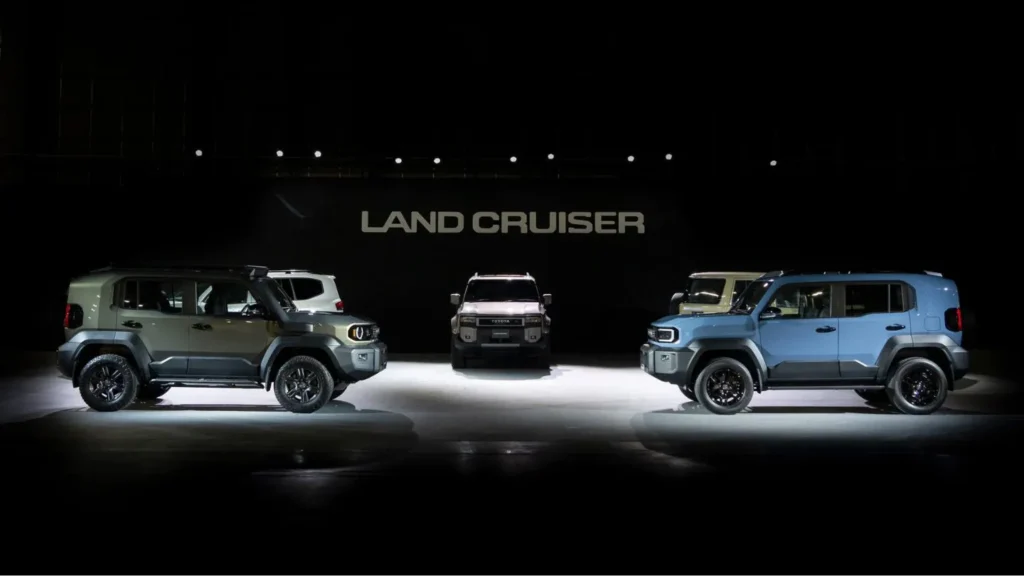
Production of the new LandCruiser FJ will take place in Thailand, alongside the HiLux. However, Toyota Australia has confirmed there are no current plans to introduce the model locally. “Toyota Australia continuously explores opportunities to evolve our vehicle line-up; however, we have no current plans to introduce the LandCruiser FJ to our market,” the company stated.
The lack of a hybrid or diesel powertrain may be a key factor in this decision, as Australian buyers typically favour those options in the off-road segment.
That said, the global appetite for compact, retro-styled off-roaders, led by the Suzuki Jimny, could encourage Toyota to revisit its decision if demand proves strong.
The bottom line
The Toyota LandCruiser FJ is an exciting idea. It has the right recipe- a legendary nameplate, a rugged chassis, clever design, and a focus on customisation that rivals the Suzuki Jimny’s. But the decision to launch with an outdated, single powertrain option is a severe strategic limitation that will likely confine it to a handful of markets and a small group of dedicated enthusiasts willing to overlook its lack of power and efficiency.
Toyota has built a fun shell, but until it provides a powertrain worthy of the 21st century, the Toyota LandCruiser FJ remains a half-measure.
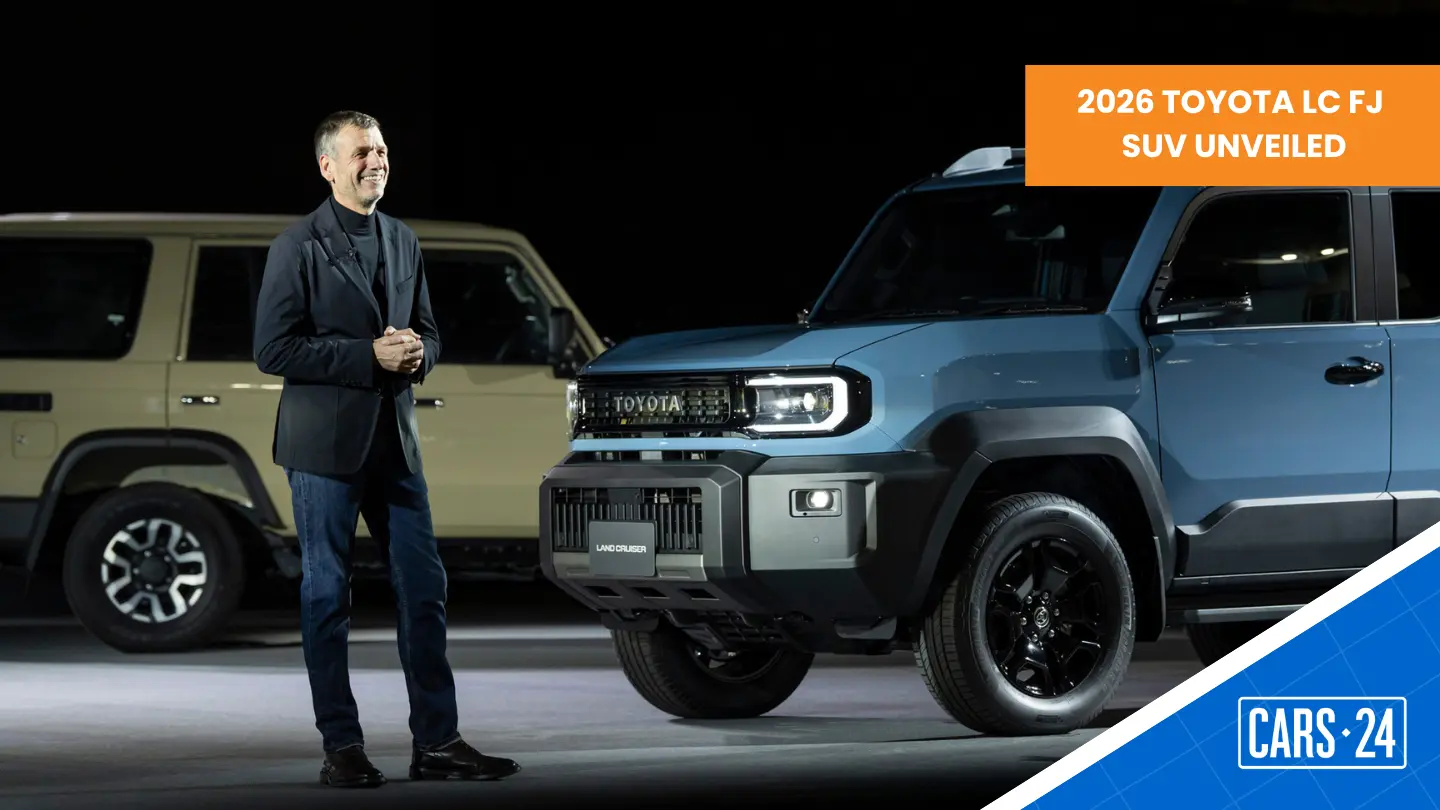
Comments
New Comment